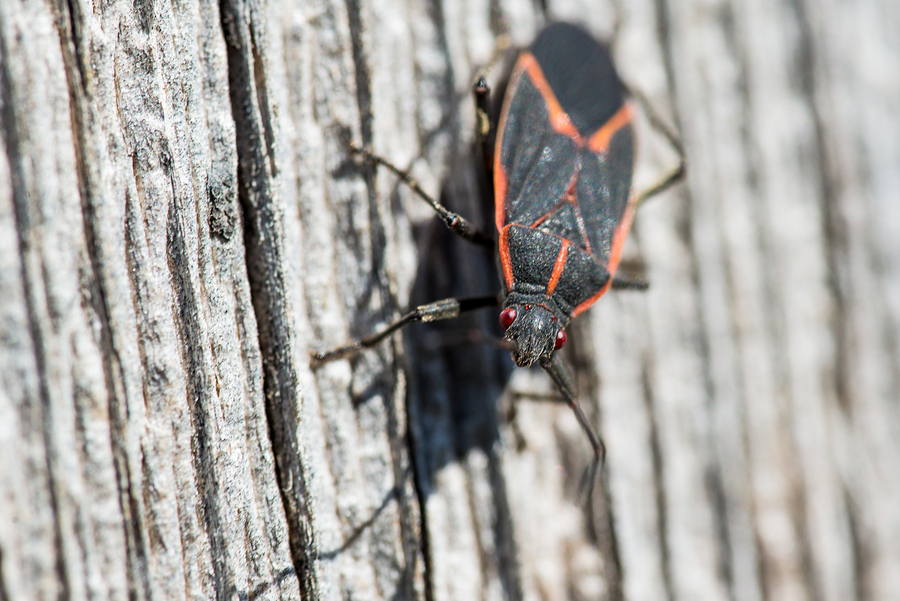READY TO GET STARTED?
REQUEST A FREE ESTIMATE
Fill out the form below or call (888) 466-7849 for a free, no-obligation estimate.

As the temperatures start to drop, overwintering pests start making their way indoors. Although these pests are considered to be beneficial, they become a nuisance when moving into your home in overwhelming numbers.
The two most common overwintering pests are boxelder bugs and ladybugs (ladybird beetles). Here’s what you need to know about each one and how you can prevent & get rid of them:
Boxelder and silver maple trees serve as the spring and summer hosts for boxelder bugs (shown above). In the winter, they migrate by the hundreds and thousands out of these trees and begin to congregate on the south side of buildings and homes. After reaching a large enough population, they may fly off to nearby sites to hibernate for winter, or try to enter the structure they have congregated on.
To prevent boxelders bugs from infesting your home, use similar exclusion methods mentioned above, making sure entry points are sealed. If you’re already seeing boxelders inside, the best way to remove them is with a vacuum.
To control a boxelder invasion, professional pest control methods have proven to be effective when infested trees and the surrounding areas are treated with a residual product, along with treatments on the sunny/south side of the home’s exterior.

Ladybugs are very beneficial insects; they protect our plants by feeding on aphids, mites, scale insects, and their eggs. But with the onset of winter and colder temperatures, large amounts of ladybugs start invading homes, making them more of a nuisance pest. To prevent this, simple home exclusion – sealing around windows and doors, replacing broken screens, and caulking around the open voids around electrical and plumbing entry points – can be effective. You can also caulk above windows and doors on the inside of the home, as ladybugs tend to emerge from these areas often. For added preventative protection, consider contacting a pest control company. Exterior treatments can be effective if done before ladybugs are seen indoors. (Treatment inside is not recommended once there’s a problem because the products kill/trap the ladybugs in wall voids which attracts carpet beetles and larder beetles.)
If you’re already seeing ladybugs indoors, remove them carefully being careful not to squish them; they produce a yellow, foul smelling defensive liquid that may stain whatever it comes in contact with. Below are two pictures showing a larva Ladybug (left) and what the overwintering adult (right) look like.

Categories